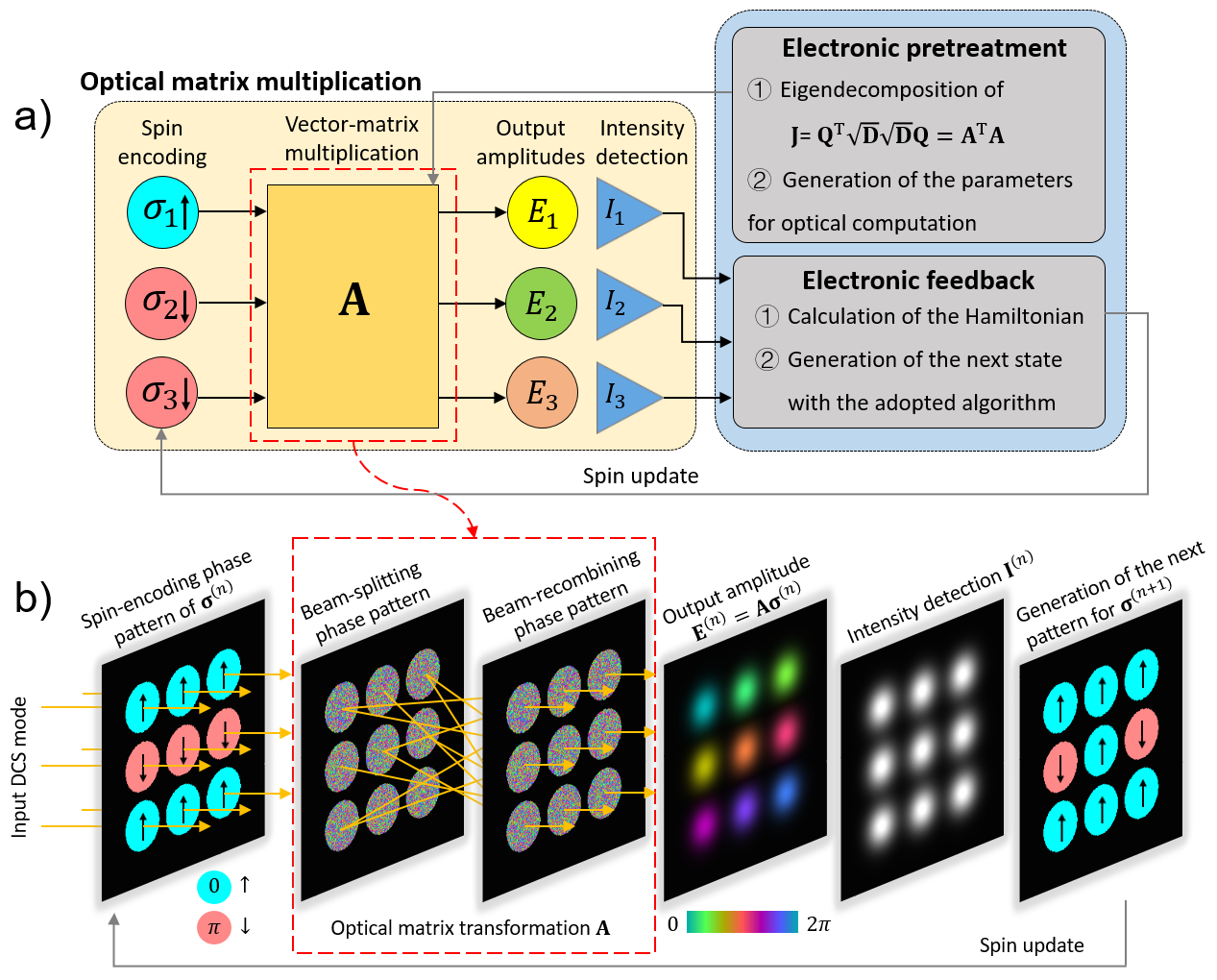 返回
返回Doctoral student Jiayi Ouyang's work about photonic Ising machine was published on Communications Physics
Combinatorial optimization problems (COPs) are ubiquitous in nature and human society, including the travelling salesman problem, the max-cut problem, and the Ising problem. The photonic Ising machine is a specialized hardware for solving COPs, which utilizes the superiority of the high-speed and low-loss parallel propagation of lightwave to accelerate the solving process of Ising problems. Recently reported photonic Ising machines can hardly realize parallel computing, high dimensionality, and the ability to map arbitrary Ising models simultaneously. The authors proposed a new architecture of photonic Ising machine based on the eigen-decomposition of the Ising interaction matrix, in which the Ising spins are encoded on the phase term of the light field, and the corresponding Hamiltonian is mapped to the intensity of the output light field via one step of optical vector-matrix multiplication. Thus, the calculation of the Ising Hamiltonian is accelerated with parallel optical computing, and the heuristic algorithm is employed on electronic domain to search the ground state. The authors implemented a photonic Ising machine based on the proposed architecture with the OVMM system based on discrete coherent spatial modes, which can solve arbitrary Ising problems within the dimensionality of 30. Several randomly generated and fully connected 20/30-spin Ising models are solved with the photonic Ising machine, and the ground state probability is 0.97/0.85. Besides, the average fidelity of the output intensity vector is higher than 0.99 in the experiment, which indicates the high accuracy of the OVMM. This work was published on Communications Physics (https://doi.org/10.1038/s42005-024-01658-x) at May 24th, 2024. The first author of this article is Ph.D. candidate Jiayi Ouyang. The corresponding author of this article is Prof. Xue Feng.

News
The summary meeting of the 2024 spring semester concluded successfully2024-07-18
Leaders from Shijingshan district government visited our laboratory2024-07-03
Professor Kaiyu Cui gave an invited presentation at The 3rd China Metamaterials Conference2024-05-30
The 2024 Symposium on Nano-Optoelectronics Marks a Resounding Success2024-05-24
Laboratory open day on the 113th anniversary celebration of Tsinghua University2024-05-03
Prof. Fang Liu was invited to give an invited report at PIERS 20242024-04-29

